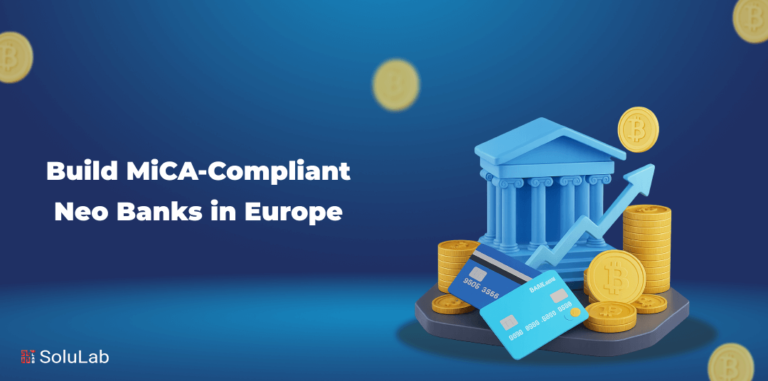
Funding is one of the biggest areas of concern for an entrepreneur or founder, and rightfully so. The ability to run a successful fundraising round can determine the growth viability and potential success of a startup.
Venture capital funding was one of the most popular forms of fundraising until a few years ago. However, ICOs — Initial Coin Offerings — changed the investment game in unprecedented ways. Today, many founders are opting for ICOs over VC funding to raise capital. At the same time, many VC firms are also paying close attention to ICOs, which remain pivotal to the development of blockchain.
Read also: ICO vs. STO: What’s the Difference?
Running an ICO is not easy, though, and requires an effort that differs from that of traditional funding in many ways. This article explores the many steps a founder needs to go through to launch an ICO.
Step 1: Decide If An ICO Is A Right Option For Your Startup
An ICO is not for everyone. There are many reasons a founder may choose to opt for the best ICO platform instead of traditional fundraising methods, or vice versa. Understanding the factors that influence ICOs and determining where a startup and founder stand regarding those factors can help determine whether it is the right option. The first thing to do after taking the decision to opt for an ICO is to build the right team.
Step 2: Build The Right Team
The core team of a startup determines the outcome of every strategy and plan. An ICO is no different. Build a core team with people that share ideologies, yet bring a host of different skills and experiences. Including persons with experience, knowledge, or interest in blockchain, cryptocurrency, and disruptive technologies is important. Whilst you will need the support of external parties during an ICO, a strong core team will help achieve a shared vision, and will work together to keep the project moving forward.
Step 3: Build A Plan
Building a plan is the first step on the journey to achieving your goals. A written plan not only helps bring multiple thoughts and inputs together but also helps in keeping the bigger picture in mind. Furthermore, as you move closer to launching an ICO, a plan allows you to constantly check in with the schedule and alter approaches to ensure that you are moving at the desired speed, and in the right direction. It is, therefore, important to revisit this plan often, make rectifications to reflect changed circumstances, and take corrective actions where required to stay on course.
Step 4: Create A Product And Start Work On A Prototype
If you have chosen to opt for an ICO, then you already have a product idea in mind. However, an idea is not sufficient to entice people to invest in an ICO. Founders and their core teams need to undertake detailed market research to identify competition, determine the qualities that set the product apart from others and create at least a basic product that is tangible proof of concept. While this may involve an initial investment, it is a crucial part of running a successful ICO. Developing a prototype or a beta version of your product is even better than a basic version. Investors need to see the product to believe in it. Once you build a secure and scalable product, investors will have more clarity on how it can fulfill existing strategic gaps and consumer needs.
Step 5: Determine The Type Of Token
A token is what investors of an ICO obtain. In this step, you need to determine the purpose and type of the token you will issue through your ICO. Whether a digital coin, in-game item, or loyalty point, the token type needs to be determined by the incentive that investors receive. You should also determine the caps, hard and soft, of the ICO. While choosing an uncapped sale is an option, it is not often exercised. You also need to plan how to split your token sales over any planned pre-sales and public ICO. Additionally, you need to consider the issuance of additional tokens if and when required.
Step 6: Write A White Paper
The White Paper is the pitch that you give to potential investors. In an ICO, you often do not meet potential funders face-to-face. Hence, the White Paper needs to convey everything about you — the founder — and your business and team. You also need to pay special attention to the future allocation of funds, highlighting where the raised funds will be applied. The product is another aspect that needs detailed coverage in the White Paper. Not only do you have to depict the details of the product, but also focus on its real-world application and upcoming or planned updates. Including market research that supports your outlook, plans, and expectations is also helpful.
Step 7: Get a Legal Opinion
ICOs are complicated from a legal standpoint. Some countries have altogether banned them, while others have included specific token types under securities laws. Furthermore, it is very easy to get caught up in legal problems if the terms of the issued tokens are not made clear. It is necessary for a founder to undertake research to understand the legalities of an ICO. However, it is also recommended to hire a dedicated legal team, specializing in dealing with ICOs. These experts can offer valuable input on how ICOs may be perceived internationally, how to word a whitepaper to avoid potential misunderstandings, as well as how to prepare for any contingencies that may come up due to misinformation over the course of the ICO.
Step 8: Get Marketing On Board
The marketing of an ICO, similar to its legalities, is highly specific. Hiring a dedicated marketing team is not something that should be avoided in the lead-up to the ICO. For an ICO to be successful, it needs to reach the right audience; it needs to be noticed amongst all the other ICOs that go live every day. Hence, a good marketing plan can make all the difference to an ICO. Since ICOs are relatively new and the market is highly crowded with news of upcoming ICOs, it is imperative to hire a marketing team with the right experience, and that will help plan a marketing strategy that shares the right information with the right audience.
Step 9: Determine Your ICO platform
Once the above steps are completed, you need to identify the platform on which to launch your ICO. There are numerous blockchain platforms you can use (Ethereum, Waves, NEO, NXT, NEM, and others). You need to analyze the pros and cons of each of these platforms and select which best suits your requirements and your product. It is also important to consider the expertise of your teammates or the technical expertise you outsource — the more familiar they are with a platform, the easier and smoother it will be to launch an ICO on it.
Step 10: Build Smart Contracts
Smart contracts are integral to token sales. A smart contract manages an ICO by self-executing to allocate token coins to investors who send their investment in the form of BTC or ETH to assigned wallets. If you do not have a dedicated team that can work on the development of smart contracts, you can hire an individual or a team to do so. Although this may add to the cost, it ensures that the smart contracts, which are crucial to the smooth running of an ICO, are correctly developed.
Step 11: Setting Up Hardware And Website
Getting the hardware right is imperative to the smooth running of an ICO. This involves multiple tasks such as setting up a multi-sig cold storage wallet to store the funds you receive through the ICO, syncing a node to the main net and test net of the ICO platform, and setting up a good website. The website, in fact, requires special attention as it is the medium that connects your vision and product to potential investors. Making it simple and user-friendly will help ICO contributors navigate easily and without any confusion. This is pivotal in ensuring that potential investors trust the ICO, as well as the company and product behind it.
Step 12: Get The Backend Secure
Security is an important part of a successful ICO. Although blockchain is intrinsically protected, ICOs have been prone to hacker attacks and security lapses (due to various errors), causing massive losses. Testing and auditing are highly recommended to ensure that your smart contracts are secure. You can choose to hire dedicated auditing and testing teams specializing in ICO hardware and software audits. Although this adds to the cost of the ICO, it protects startups from a much larger loss that may be faced through potential hacking.
Step 13: Publicity
Once everything at the backend is complete, you need to create the right buzz for your ICO. The ICO needs to not only stand apart from others but also needs to evoke interest in the product and trust in the startup. Hence, it is imperative to tap the right media to market the ICO. Associating with marketing sites that are not highly reputed or that have been previously associated with scams can have a detrimental effect on the ICO. Choose the right media and outreach carefully, rely on known options such as social media channels, and create buzz well ahead of time to evoke enough interest for the ICO to open to an eager audience. Choosing the right exchange on which to list the tokens and ICO falls within the purview of the right outreach. Making public appearances, participating in podcasts, and personally reaching out to the public are also something that needs to be considered.
These are the thirteen steps that constitute the lead-up to your ICO. While the order of the steps can differ depending on where a founder and startup stand, all these elements need to be part of the process.
Read also: ICO Consulting 101 – Your Ultimate Guide Before Launching an ICO
ICOs have become integral to the fundraising process and are here to stay. The competition will continue to increase in this funding method. Hence, following steps that can strengthen your ICO and improve public trust will go a long way in standing apart from other ICO launches.
Blog Credits: Medium




